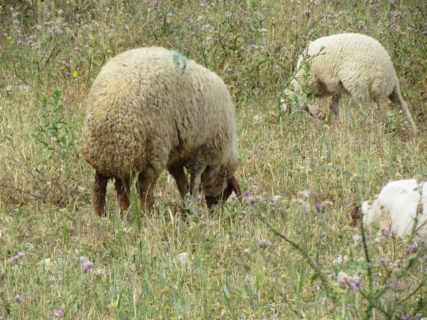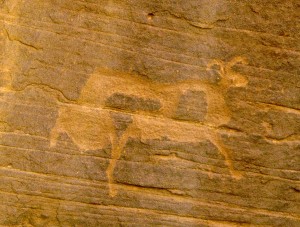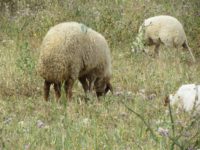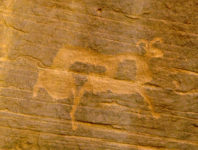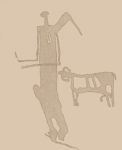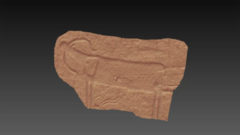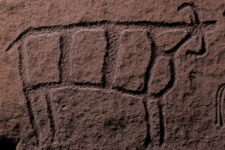Making up 25% of the world’s domestic sheep populations, the fat-tailed type is found in Africa, the Middle East, Pakistan, North India, Western China and Central Asia. It dates back at least to 3000 BC, based on depictions found on stone vessels from Uruk, and the later Ur (2400 BCE), in Mesopotamia. These sheep were developed to increase the fat stored in their tails, which has become a vital ingredient for cooking. The tail fat can amount to as much as 4.5 kg (10 lb) in a 27 kg (60 lb) carcass. Fat-tailed sheep are very hardy and well adapted to survive some of the most marginal environments, including the deserts of Arabian.
The Awassi sheep is the fat-tailed breed found in Arabia and the Middle East. It has a brown head and white body. Raised for its meat, wool, and especially its milk, it is very well adapted to the desert, is resistant to parasites and diseases, can walk long distances, survive in poor grazing conditions and can endure temperature extremes. During the dry season, it draws on the energy reserves stored in its tail for survival. Bedouin women weave blankets and rugs from their coarse wool.

